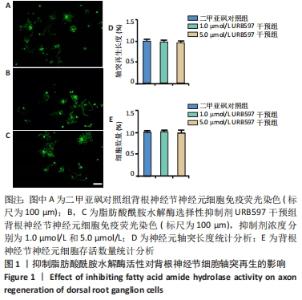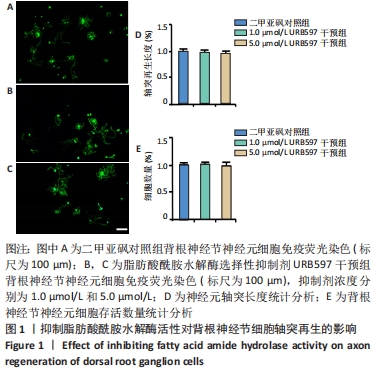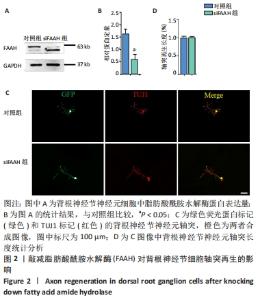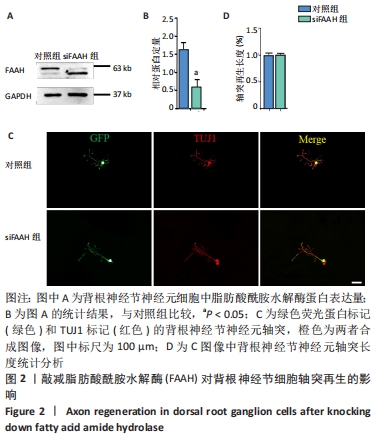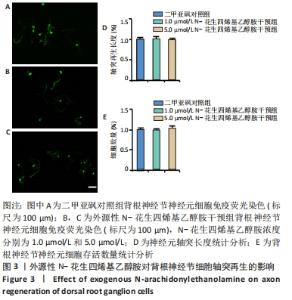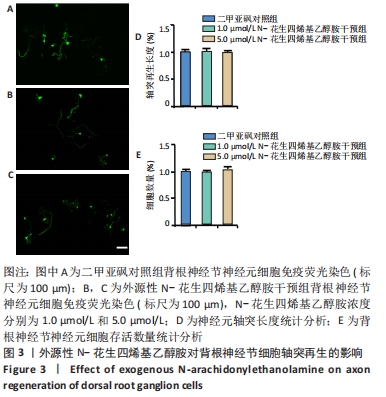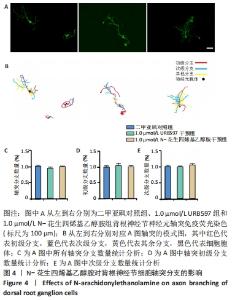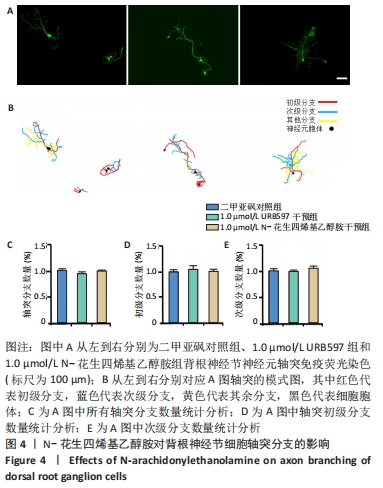[1] ZOU S, KUMAR U. Cannabinoid Receptors and the Endocannabinoid System: Signaling and Function in the Central Nervous System. Int J Mol Sci. 2018;19(3):833.
[2] KRISHNAN G, CHATTERJEE N. Differential immune mechanism to HIV-1 Tat variants and its regulation by AEA [corrected]. Sci Rep. 2015;5:9887.
[3] ZAJKOWSKA Z, BORSINI A, NIKKHESLAT N, et al. Differential effect of interferon-alpha treatment on AEA and 2-AG levels. Brain Behav Immun. 2020;90:248-258.
[4] MACCARRONE M, ROSSI S, BARI M, et al. Anandamide inhibits metabolism and physiological actions of 2-arachidonoylglycerol in the striatum. Nat Neurosci. 2008; 11(2):152-159.
[5] LITTLE TJ, CVIJANOVIC N, DIPATRIZIO NV, et al. Plasma endocannabinoid levels in lean, overweight, and obese humans: relationships to intestinal permeability markers, inflammation, and incretin secretion. Am J Physiol Endocrinol Metab. 2018; 315(4):E489-E495.
[6] LI H, YIN J, ZHANG Z, et al. Auricular vagal nerve stimulation ameliorates burn-induced gastric dysmotility via sympathetic-COX-2 pathways in rats. Neurogastroenterol Motil. 2016;28(1):36-42.
[7] MALEK N, KUCHARCZYK M, STAROWICZ K. Alterations in the anandamide metabolism in the development of neuropathic pain. Biomed Res Int. 2014;2014:686908.
[8] KAMIMURA R, HOSSAIN MZ, UNNO S, et al. Inhibition of 2-arachydonoylgycerol degradation attenuates orofacial neuropathic pain in trigeminal nerve-injured mice. J Oral Sci. 2018;60(1):37-44.
[9] OAKES MD, LAW WJ, CLARK T, et al. Cannabinoids Activate Monoaminergic Signaling to Modulate Key C. elegans Behaviors. J Neurosci. 2017;37(11):2859-2869.
[10] FELIÚ A, BONILLA DEL RÍO I, CARRILLO-SALINAS FJ, et al. 2-Arachidonoylglycerol Reduces Proteoglycans and Enhances Remyelination in a Progressive Model of Demyelination. J Neurosci. 2017;37(35):8385-8398.
[11] MECHA M, YANGUAS-CASÁS N, FELIÚ A, et al. The endocannabinoid 2-AG enhances spontaneous remyelination by targeting microglia. Brain Behav Immun. 2019;77:110-126.
[12] TAPIA M, DOMINGUEZ A, ZHANG W, et al. Cannabinoid Receptors Modulate Neuronal Morphology and AnkyrinG Density at the Axon Initial Segment. Front Cell Neurosci. 2017;11:5.
[13] WOOLUMS BM, MCCRAY BA, SUNG H, et al. TRPV4 disrupts mitochondrial transport and causes axonal degeneration via a CaMKII-dependent elevation of intracellular Ca2. Nat Commun. 2020;11(1):2679.
[14] HE JC, GOMES I, NGUYEN T, et al. The G alpha(o/i)-coupled cannabinoid receptor-mediated neurite outgrowth involves Rap regulation of Src and Stat3. J Biol Chem. 2005;280(39):33426-33434.
[15] JANG Y, JUNG J, KIM H, et al. Axonal neuropathy-associated TRPV4 regulates neurotrophic factor-derived axonal growth. J Biol Chem. 2012;287(8):6014-6024.
[16] GUGLIANDOLO E, D’AMICO R, CORDARO M, et al. Effect of PEA-OXA on neuropathic pain and functional recovery after sciatic nerve crush. J Neuroinflammation. 2018;15(1):264.
[17] PASTUHOV SI, FUJIKI K, NIX P, et al. Endocannabinoid-Goα signalling inhibits axon regeneration in Caenorhabditis elegans by antagonizing Gqα-PKC-JNK signalling. Nat Commun. 2012;3:1136.
[18] FORNARO M, SHARTHIYA H, TIWARI V. Adult Mouse DRG Explant and Dissociated Cell Models to Investigate Neuroplasticity and Responses to Environmental Insults Including Viral Infection. J Vis Exp. 2018;(133):56757.
[19] LIN YT, CHEN JC. Dorsal Root Ganglia Isolation and Primary Culture to Study Neurotransmitter Release. J Vis Exp. 2018;(140):57569.
[20] MALIN SA, DAVIS BM, MOLLIVER DC. Production of dissociated sensory neuron cultures and considerations for their use in studying neuronal function and plasticity. Nat Protoc. 2007;2(1):152-160.
[21] DAVIES A, LUMSDEN A. Relation of target encounter and neuronal death to nerve growth factor responsiveness in the developing mouse trigeminal ganglion. J Comp Neurol. 1984;223(1):124-137.
[22] LINDWALL C, KANJE M. The Janus role of c-Jun: cell death versus survival and regeneration of neonatal sympathetic and sensory neurons. Exp Neurol. 2005;196(1):184-194.
[23] MA JJ, JU X, XU RJ, et al. Telomerase Reverse Transcriptase and p53 Regulate Mammalian Peripheral Nervous System and CNS Axon Regeneration Downstream of c-Myc. J Neurosci. 2019;39(46):9107-9118.
[24] SAIJILAFU, ZHANG BY, ZHOU FQ. In vivo electroporation of adult mouse sensory neurons for studying peripheral axon regeneration. Methods Mol Biol. 2014;1162:167-175.
[25] ZHANG BY, SAIJILAFU, LIU CM, et al. Akt-independent GSK3 inactivation downstream of PI3K signaling regulates mammalian axon regeneration. Biochem Biophys Res Commun. 2014;443(2):743-748.
[26] COSTA FA, MOREIRA NETO FL. Satellite glial cells in sensory ganglia: its role in pain. Rev Bras Anestesiol. 2015;65(1):73-81.
[27] AVRAHAM O, DENG PY, JONES S, et al. Satellite glial cells promote regenerative growth in sensory neurons. Nat Commun. 2020;11(1):4891.
[28] BAI J, LIU F, WU LF, et al. Attenuation of TRPV1 by AMG-517 after nerve injury promotes peripheral axonal regeneration in rats. Mol Pain. 2018;14:1744806918777614.
[29] WINKLER K, RAMER R, DITHMER S, et al. Fatty acid amide hydrolase inhibitors confer anti-invasive and antimetastatic effects on lung cancer cells. Oncotarget. 2016;7(12):15047-15064.
[30] LEVER IJ, ROBINSON M, CIBELLI M, et al. Localization of the endocannabinoid-degrading enzyme fatty acid amide hydrolase in rat dorsal root ganglion cells and its regulation after peripheral nerve injury. J Neurosci. 2009;29(12):3766-3780.
[31] SAIJILAFU, HUR EM, LIU CM, et al. PI3K-GSK3 signalling regulates mammalian axon regeneration by inducing the expression of Smad1. Nat Commun. 2013;4:2690.
[32] HE XL, YANG L, WANG ZJ, et al. Solid lipid nanoparticles loading with curcumin and dexanabinol to treat major depressive disorder. Neural Regen Res. 2021;16(3):537-542.
[33] PACHER P, BÁTKAI S, KUNOS G. The endocannabinoid system as an emerging target of pharmacotherapy. Pharmacol Rev. 2006;58(3):389-462.
|
